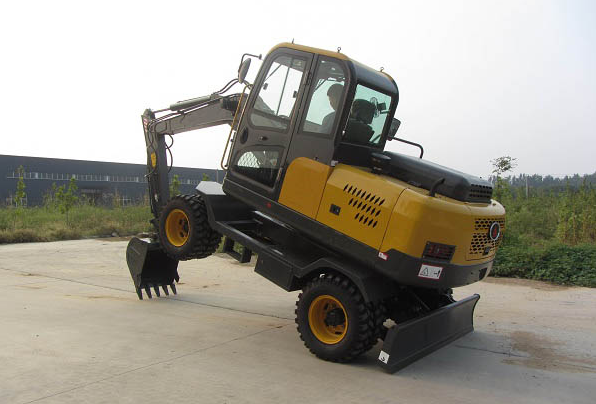- info@hightoptools.com
- Monday - Sunday 9.00 - 18.00
WhatsApp: +86 18162052962

The working process of the hydraulic small excavator includes the following actions: boom lifting, arm retracting, bucket loading and unloading, turntable rotation, whole machine walking and other auxiliary actions. Except for auxiliary actions such as steering of the whole machine that do not require full power drive, the others are the main actions of hydraulic small excavators, and full power drive should be considered. As the working objects and working conditions of small hydraulic excavators vary greatly, there are two special requirements for the work of the main engine. One is that the resistance and working speed change at any time when various main actions are realized. Therefore, the pressure of the hydraulic cylinder and the hydraulic motor is required. The sum flow can also be changed accordingly. The second is to make full use of the engine power and shorten the cycle time. During the work process, there are often two main actions such as the combined action of lifting and turning at the same time.
The composition of a working cycle and the combination of actions of a small hydraulic excavator mainly include:
1. Excavation: excavation is usually carried out with bucket hydraulic cylinder or stick hydraulic cylinder, or both are used together for excavation. Therefore, in this process, it is mainly the combined action of bucket and stick, and when necessary, with boom action .
2. Full bucket lifting and turning: After the excavation is completed, the boom hydraulic cylinder will lift the boom and the full bucket will be lifted. At the same time, the turning hydraulic motor turns the turntable to the unloading place. At this time, it is mainly a combined action of the boom and the turning.
3. Unloading: When turning to the unloading point, the turntable is braked, the unloading radius is adjusted with the stick hydraulic cylinder, and then the bucket hydraulic cylinder is retracted, and the bucket is unloaded. In order to adjust the unloading position, there is also the cooperation of the boom hydraulic cylinder. At this time, it is a compound action of the stick and the bucket, and the boom action is in between.
4. Empty bucket return: after unloading, the turntable rotates in the reverse direction, the boom hydraulic cylinder and the stick hydraulic cylinder cooperate, and the empty bucket is placed at the new excavation point. At this time, it is a compound action of rotation and boom or stick.
In summary, the entire operation cycle process is that the hydraulic small excavator drives the walking motor and the supporting earth-moving vehicle to enter the work surface together, and the transport vehicle reverses, adjusts, and stops at the side or rear of the small excavator. The driver of the small excavator pulls the joystick to turn on the slewing motor control valve. Then the slewing motor rotates and drives the upper platform to rotate to make the working device turn to the excavation site. While performing the above process, operate the boom cylinder reversing valve to make it move The upper cavity of the arm cylinder is filled with oil, the boom is lowered until the bucket touches the ground, and then the driver manipulates the reversing valve of the stick cylinder and the bucket cylinder to inject oil into the large cavities of the two, and coordinate actions to speed up the progress of the work. Compound action of excavation and loading. After the bucket is full, return the handles of the stick cylinder and the bucket cylinder to the neutral position to lock the bucket and stick cylinder, and then manipulate the boom cylinder reversing valve to make the boom cylinder Inject oil into the lower cavity, raise the boom, lift the bucket full of soil away from the working surface, then turn the platform back to the switch to the valve handle to rotate the upper platform, drive the bucket to the top of the transport vehicle, and then manipulate the stick The cylinder makes the height of the stick slightly lower, and manipulates the bucket cylinder at a proper height to unload the bucket. After the earth is unloaded, the platform is reversed and the boom is lowered until the bucket returns to the top of the working point for the next working cycle.
Leave a comment